

The Eurasian blue tit, of which there are nine sub-species, is a small round headed tit, common to gardens and woodland areas throughout most of Europe and encroaching into Asia Minor.
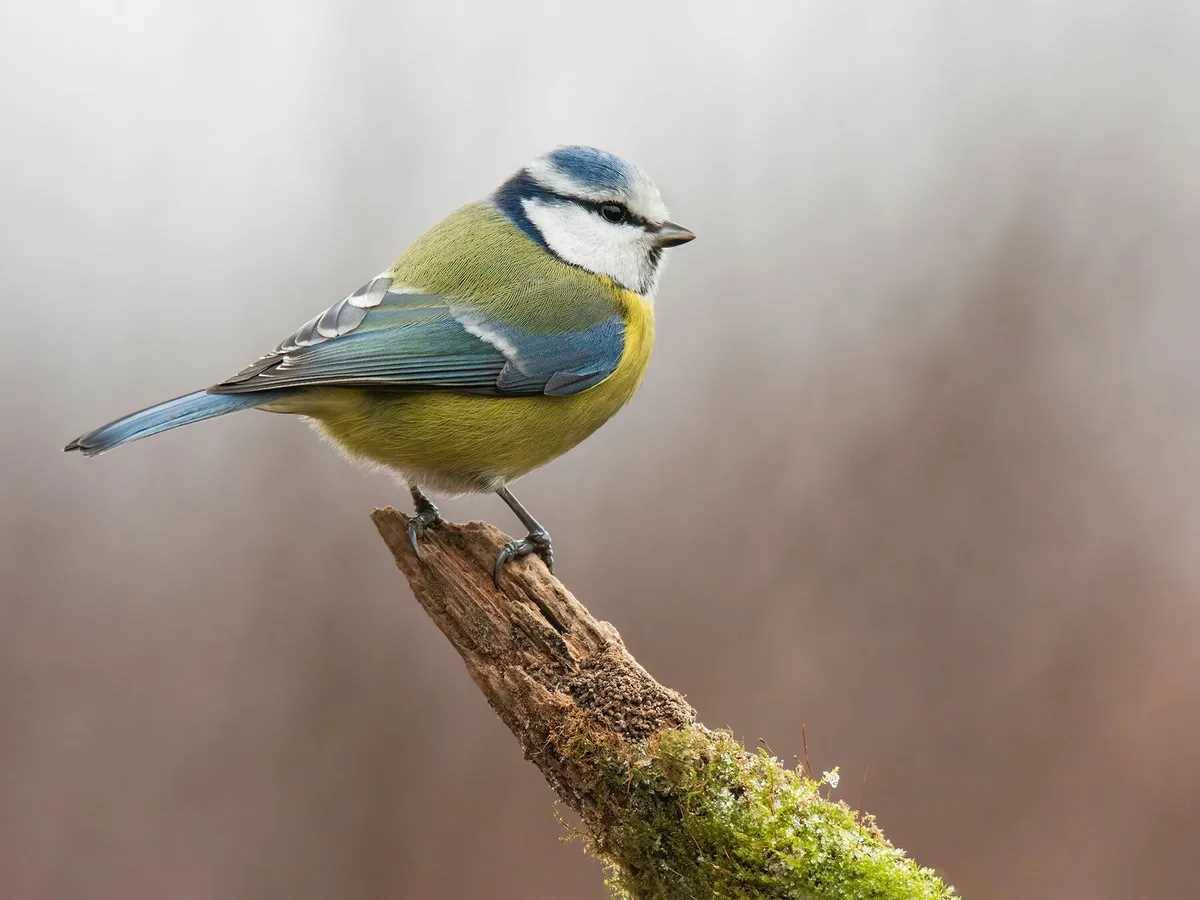
Blue Tit
The adult male has a blue cap with white cheeks and forehead and a black stripe running from the base of the upper mandible, through the eye to the nape of the neck. There is a narrow black vertical stripe on the chin running from the base of the lower mandible to the throat.
The upperparts are predominantly a blue green hue from the lower mantle down the back to a slightly paler and more yellowy rump. The upper mantle area is a paler greyish blue shade. The bastard wing and upper wing coverts are a bright blue, edged in a pale grey. The blue greater wing coverts have white tips resulting in a narrow white wing bar extending from an area in front of the secondary flight feathers, to the bird's back.
Upper tail coverts are bright blue with darker blue tail feathers edged in a brighter blue.
Adult females are very similar to the male with overall slightly less blue colouration and more grey to the upperparts. Juvenile blue tits are not dissimilar but have a greenish cap with greyish drab yellow underparts.
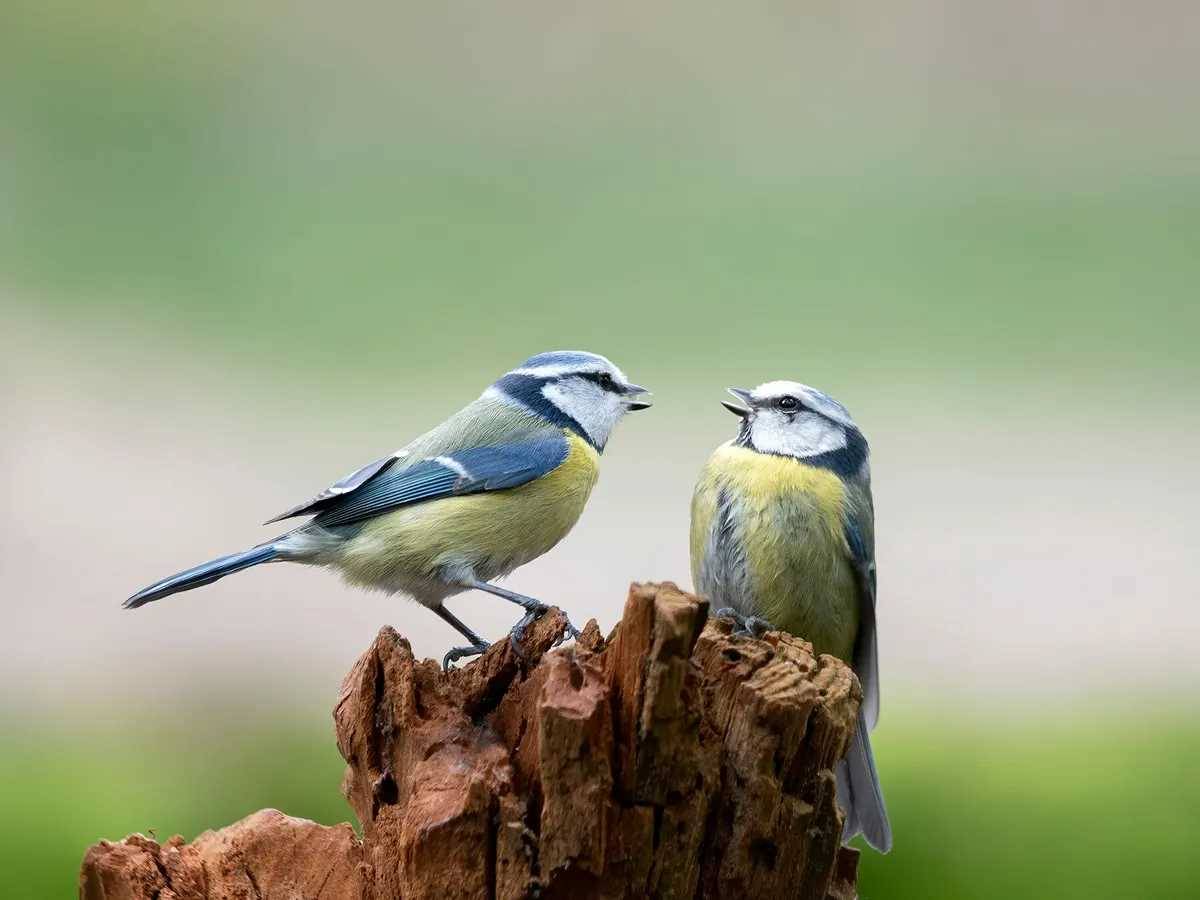
A pair of Blue Tits
Blue tits make quite a lot of noise. They are social birds and vocalise to other members of their group or loose flock, frequently using a single short 'tsee', sometimes repeated.
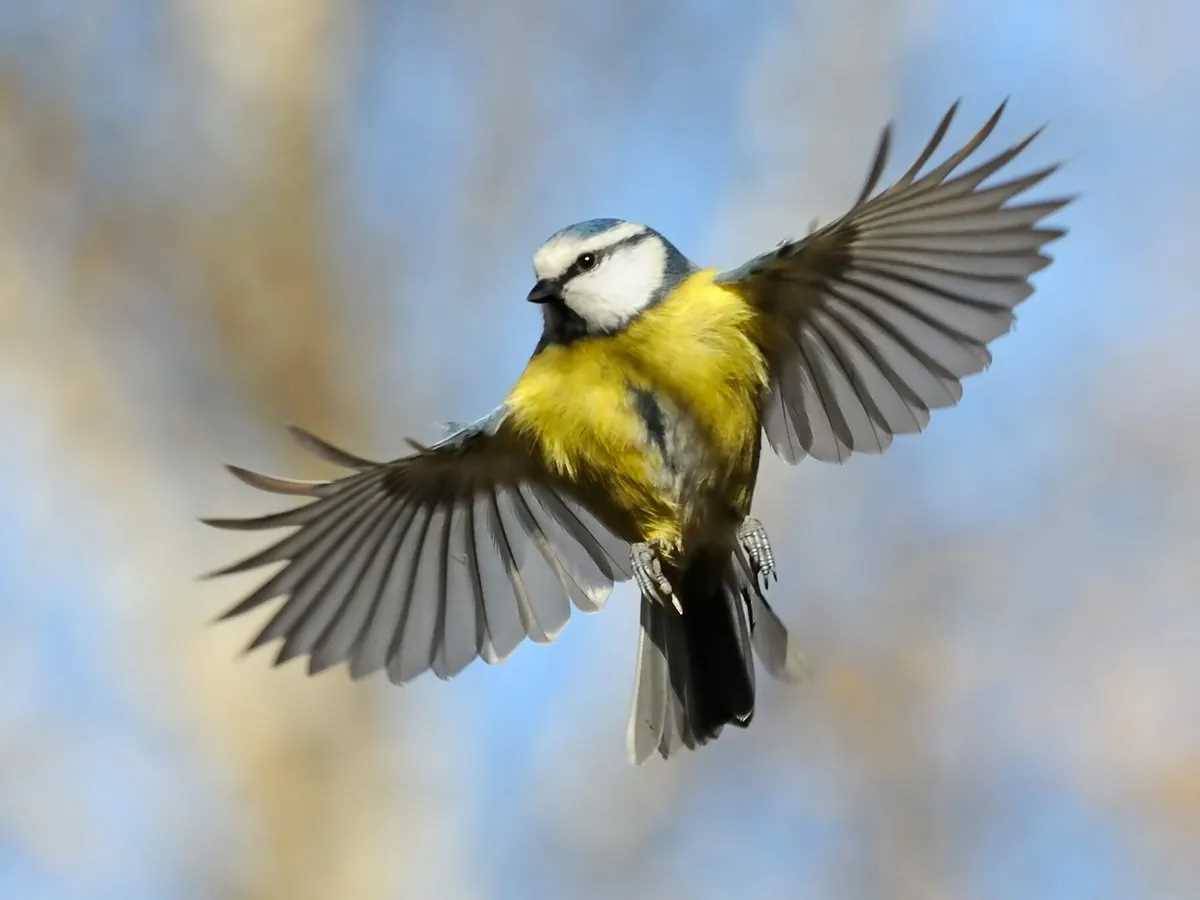
Blue Tit in flight
A varied diet of fruit, seeds, insects, spiders, caterpillars, grubs and larvae often augmented by nuts and food from garden feeders and bird tables sustains these active little birds.
For a full guide on the diet of a blue tit, check out this article.
Did you know?
The Eurasian blue tit is from the scientific order of birds known as Passeriformes which contains more than five thousand different species and accounts for over fifty per cent of the world's total bird population.
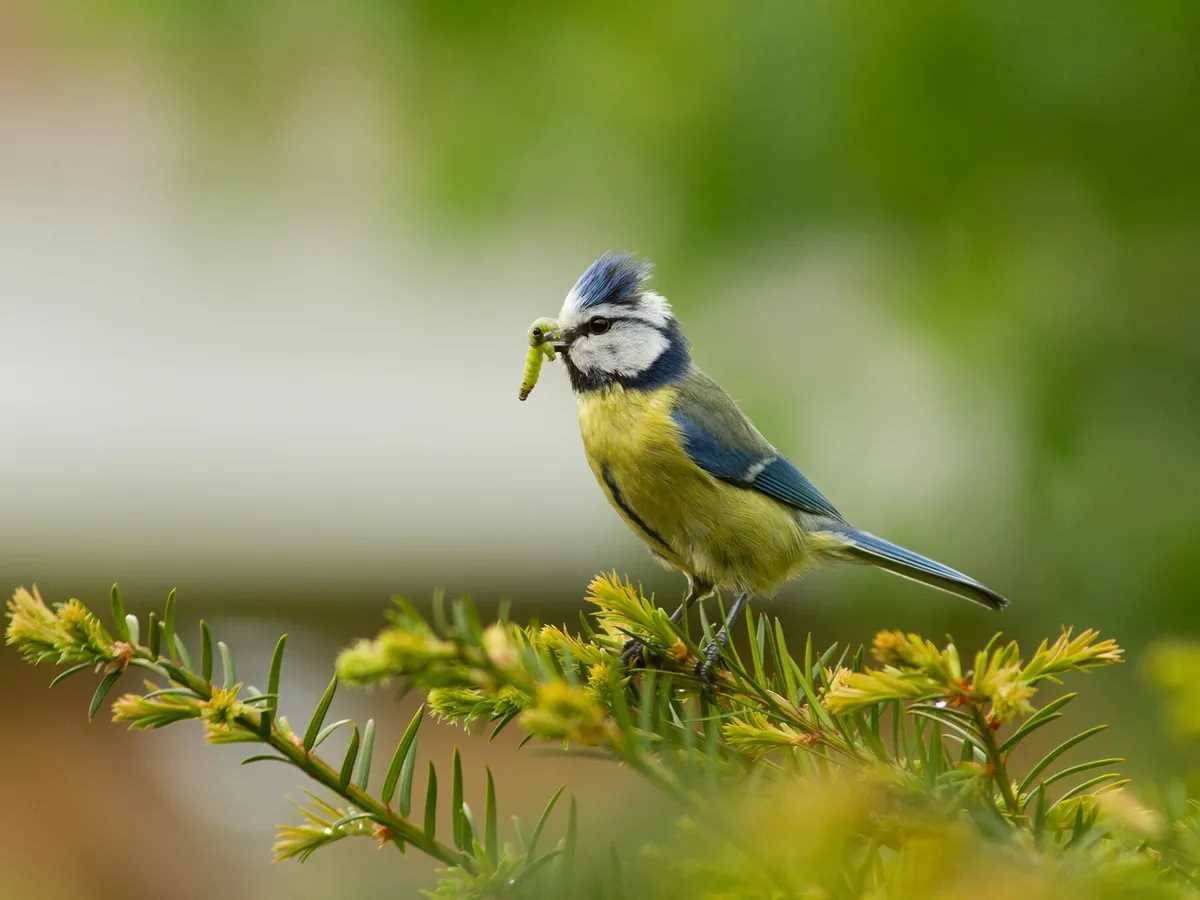
A blue tit feeding on a caterpillar
Apart from Iceland and northern parts of Scandinavia the Eurasian blue tit can be found throughout the United Kingdom and continental Europe encompassing most Mediterranean islands including Mallorca, Rhodes and Crete. It is also a resident of Morocco and Libya and sub-species can be found in southern Russia, Crimea and the Caucasus, Turkey, Jordan, Iran, Iraq and into Turkmenistan.
For information on the migration habits of blue tits, check out this article.

Eurasian Blue Tit perched
Preferring large broadleaf or mixed woodland areas, hedgerows, parks and gardens, the Eurasian blue tit is a common sight and easily identifiable with its small size but distinctive yellow, blue, black and white patternation. Although it is similar to the Great Tit it is, in fact smaller, and can be distinguished by its round blue head, white forehead with black eye stripe and tiny bill.

The female constructs a small cup shaped nest out of moss and other plant material which is normally sited in a tree or wall and lays up to two clutches annually between April to late June.
For more information on Blue Tit nesting, check out this guide.
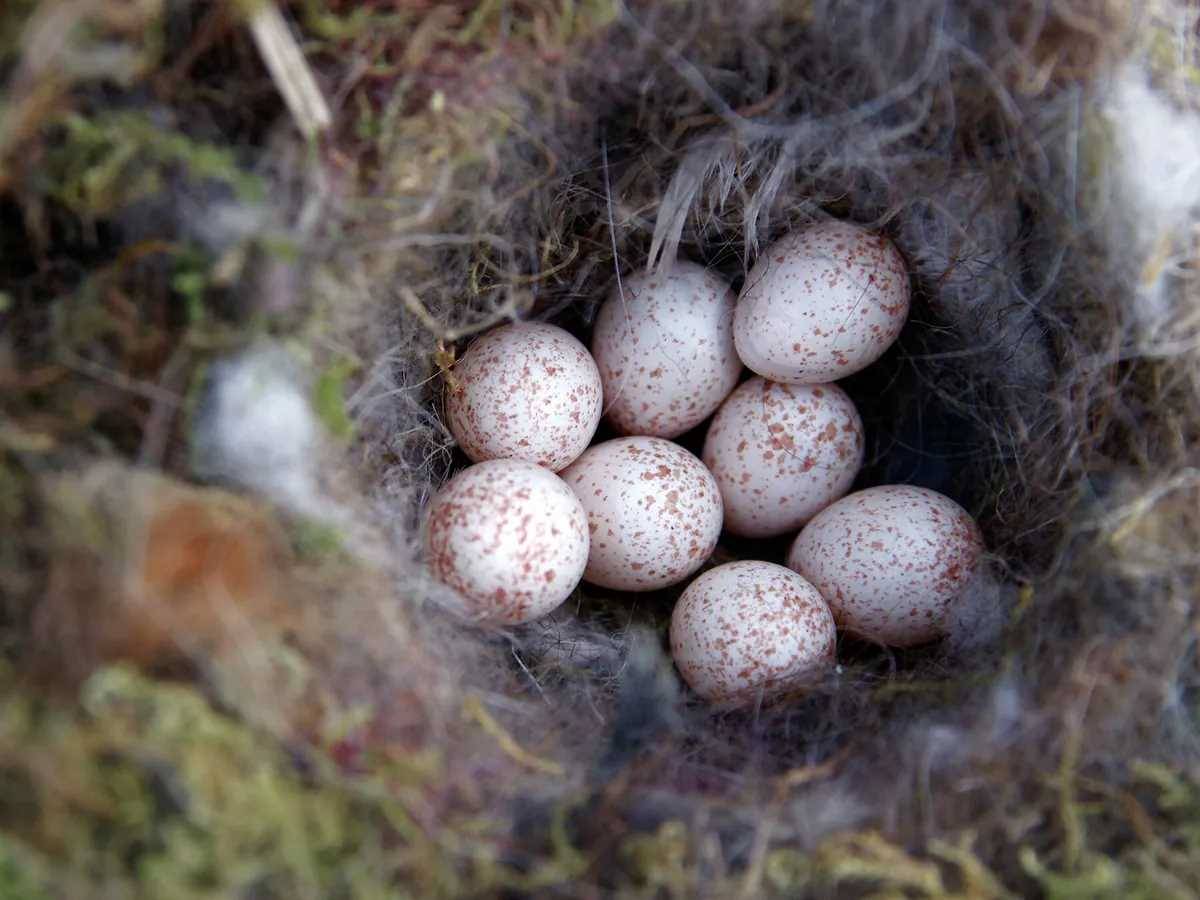
Blue Tit nest with eggs
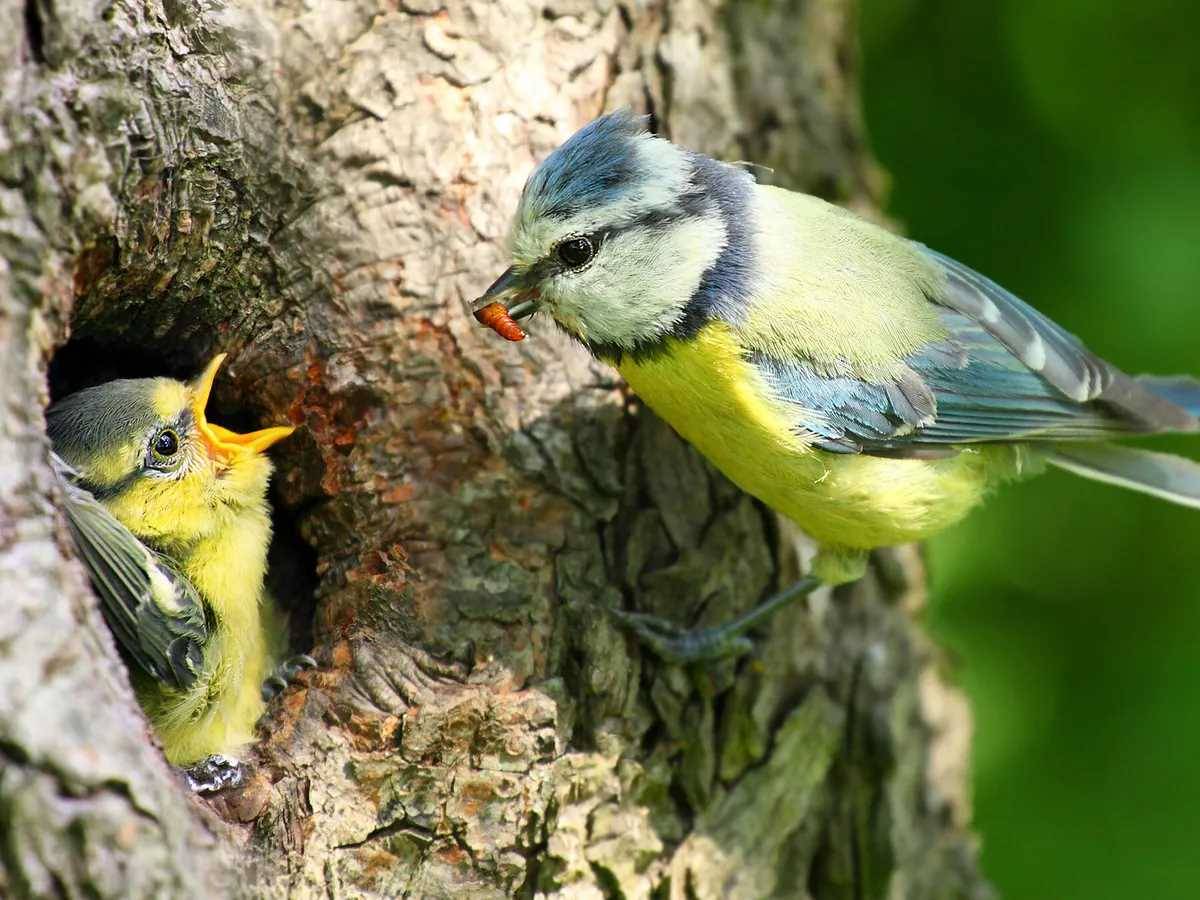
Blue Tit feeding chicks
